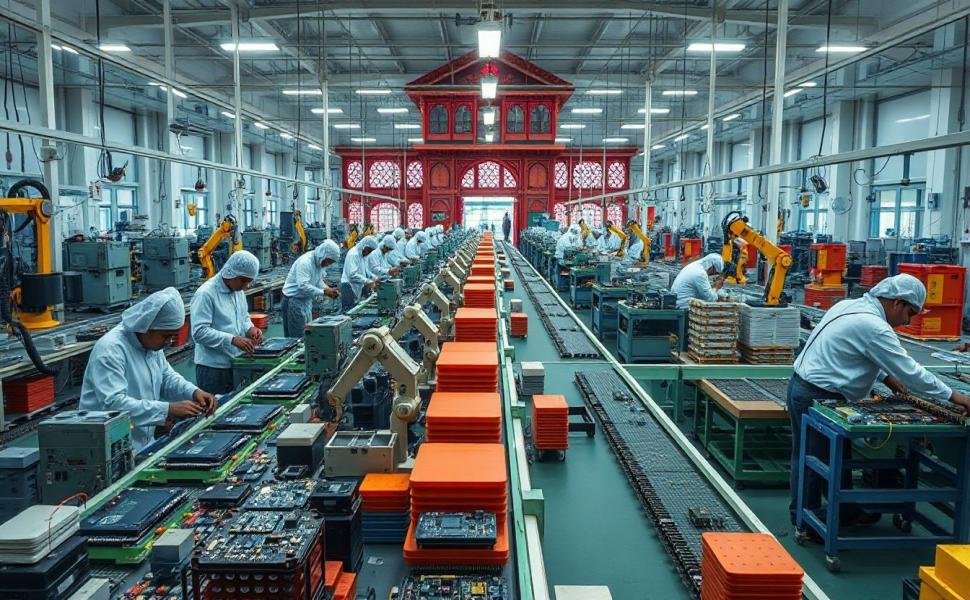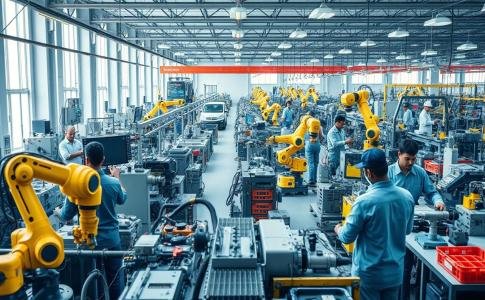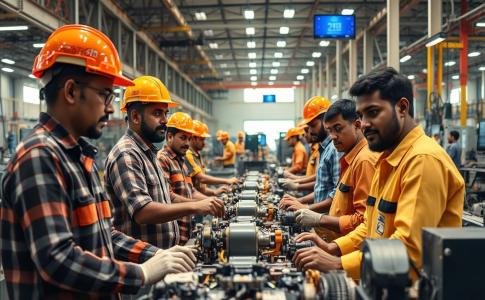
Electronics Parts Manufacturing in India: A Comprehensive Guide to Growth, Opportunities, and Industry Insights
Introduction
India is quickly becoming a major player in making electronic parts for the world. As demand for electronics rises, industries like telecom, consumer gadgets, autos, and renewable energy want more local parts. The government isn’t sitting still either. Programs such as "Make in India" and the Production-Linked Incentive (PLI) schemes are pushing companies to produce more here. This article walks you through the current scene, the chances, the hurdles, and what’s coming next for electronics parts manufacturing in India.
The Current Landscape of Electronics Parts Manufacturing in India
Market Size and Growth Trends
India’s market for electronic goods is growing fast. In fact, recent reports show the industry expanding at around 10% a year. Within this, component production is seeing a boom, with some segments like semiconductors growing even faster. Compared to countries like China and South Korea, India still has room to grow but already shows strong signs of becoming a global manufacturing hub.
Key Players and Industry Leaders
Big names like Bharat Electronics Limited and private giants such as Reliance and Tata dominate India’s electronics scene. International companies are also investing here, seeing India’s promise. Foxconn, for example, has set up large manufacturing units, and Wistron is expanding its operations. Many of these companies are creating thousands of jobs and boosting local economies.
Government Policies and Incentives
The government has rolled out several policies to attract investment. The PLI schemes alone promise huge incentives for companies that produce critical parts locally. Initiatives like "Smart Cities" and "Digital India" also create demand for electronics and parts. Experts believe these policies will keep fueling growth and attracting global investments for years to come.
Critical Electronics Components Manufactured in India
Semiconductors and Integrated Circuits
Semiconductors are the brain of all electronics. India is working to build its own chip-making units, with some outfits like the Indian Space Research Organisation (ISRO) leading the charge. Major investments from both domestic and foreign firms, like Vedanta and STMicroelectronics, aim to ramp up local chip production. Still, India lags behind countries like Taiwan and South Korea but is catching up fast.
Passive Components (Resistors, Capacitors, Inductors)
Passive parts are in almost every electronic device. India’s factories make large quantities of resistors and capacitors, mostly for export. Some companies focus solely on these parts, shipping them globally. Demand keeps climbing as more electronics are built domestically and abroad.
Connectors, Switches, and Other Interconnect Components
These tiny but vital parts link different electronics together. India has developed solid manufacturing capabilities here, but face challenges with raw material availability. Companies are investing in new plants and technology to boost local supply and reduce imports.
Specialty Components (Sensors, MEMS)
Sensors are everywhere now, from cars to smart home devices. Indian firms are entering this high-growth field with innovative products. Startups and established companies are partnering with tech giants to develop new sensor types, helping India take a share in the changing IoT and healthcare markets.
Opportunities and Challenges in the Industry
Growing Domestic and International Demand
India’s rising middle class and expanding export markets tell a simple story—more electronics are needed. The global supply chain is also looking to diversify away from China, opening new doors for Indian manufacturers to step in.
Technology Adoption and Innovation
Factories adopting automated processes, AI, and 3D printing can produce better parts faster. Innovation labs and R&D centers are sprouting all over, keeping India in the running for futuristic tech.
Supply Chain and Infrastructure Constraints
It’s not all smooth sailing. Getting quality raw materials, managing logistics, and reliable power supply are ongoing issues. Building dedicated clusters for electronics manufacturing could fix some of these problems and boost industry confidence.
Skill Development and Workforce
India needs highly skilled workers to meet the demand for sophisticated components. Many companies and the government run training centers to fill this gap. Without skilled technicians and engineers, growth will slow down.
Future Outlook and Strategic Recommendations
Emerging Trends and Future Growth Drivers
India is set to benefit from 5G, IoT, and smart device trends. Experts predict that by 2030, India could be a top manufacturing hub for electronics. The flood of new technologies will demand more local parts, creating a huge opportunity.
Investment and Partnership Opportunities
Foreign companies eager to enter India will find a welcoming environment. Building partnerships with local businesses and government bodies can open doors for joint R&D and shared investments. This way, India can jump even faster.
Policy and Infrastructure Development for Sustainable Growth
To keep the momentum going, India needs to improve infrastructure, cut red tape, and nurture local ecosystems of innovation. Public-private collaborations will play a critical role in building a competitive, sustainable electronics sector.
Conclusion
India’s role in making electronic parts is changing fast. Big investments, supportive policies, and a growing talent pool make this country a top contender for global electronics manufacturing. But more work remains—creating robust infrastructure, closing skill gaps, and fostering innovation will be key. If India plays its cards right, it can become a true leader in electronics parts manufacturing by 2030. The future is bright, and the opportunity is there for industry insiders, investors, and policymakers alike. Unlocking India’s full potential will require everyone working together—industry, government, and academia—to turn this vision into reality.







